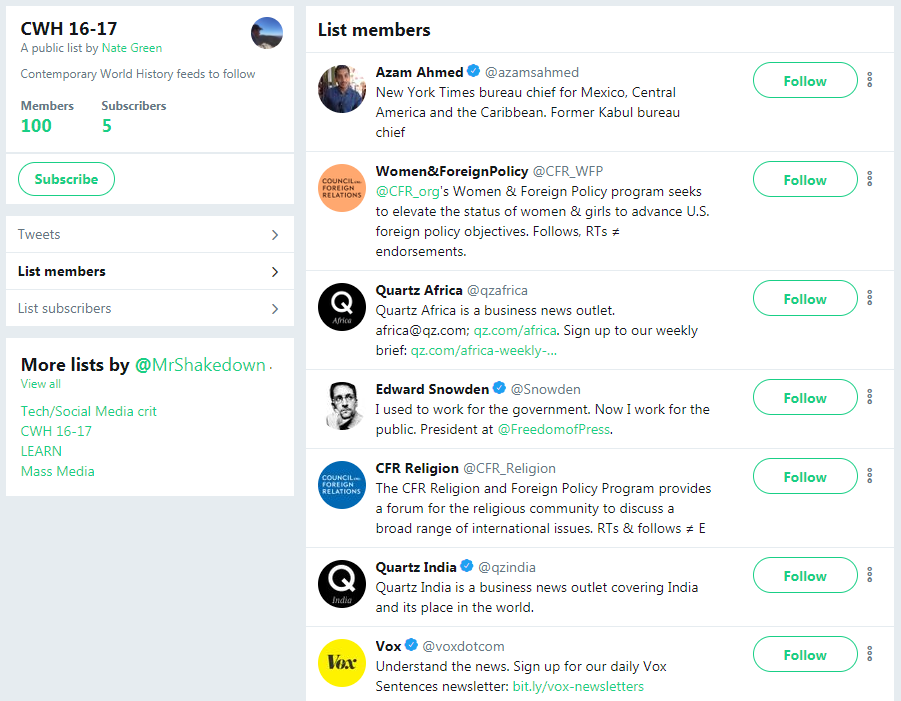In 2015, Wes signed up for my Mass Media course, hoping to learn about journalism, broadcasting, graphic design and film. He discovered a passion for film and graphic design and he quickly rebuilt his Twitter to follow writers, directors, producers and filmmakers. This feed provided more films to watch, more critics to read and more directors to emulate, which in turn inspired him to start experimenting with iMovie and Photoshop, and later Premier and After Effects, in order to create and share his own films and designs. At the end of the course, I asked students to upload their favorite projects to a digital portfolio. To this day, Wes still updates his digital portfolio!
In talking to Wes recently, he mentioned how important reforming his social media feeds was in helping him realize and pursue his passions. On many of his accounts, he stopped following “friends” and began learning, critiquing, emulating and collaborating. At first, he blogged about horror films on Tumblr, then he produced his own film reviews on YouTube, and now he’s analyzing and critiquing films on Letterboxd with other film buffs. Wes said he felt fulfilment when he applied for a job and the interviewer had seen his work online!
If you’re like me, you get frustrated that despite our best efforts, students continue to encounter and share misinformation, use poor sources on assignments and post inappropriately on social media. Over many conversations with students, I realized I’m struggling with this because I’m trying to teach media literacy skills in a “lab” environment with artificial conditions. There’s a big difference in showing something to a student and saying “Is this a good source?” or “Should you post this?” and actually having students regularly ask those kinds of questions in the course of their own social media networks. To address this, I decided to build instruction around student interests so that students can interact with media in a network that matters to them. I thought that if students started from a place of genuine interest, they would be more likely to consume and create media intentionally and skillfully. And this learning will have “real-world” impact for them. I’ve been experimenting with this instruction for several years in my my history classes, my media classes, and now in my social media elective. Here’s how I did it.
Consuming Quality Content
Building a personal learning network starts with social media. First, I work to pique students’ interest in a topic, then help them connect with professionals and organizations that are producing quality content about that topic on social media. One tool I use repeatedly is the “list” function on Twitter, which allows me to curate a collection of public figures and organizations that my students can follow. Here’s an example of a list focused on journalism and current events for students in my Mass Media class, and here’s an example for my Contemporary World History students to keep up with global news and developments. I built a website for students to build their own personalized learning networks for interests that span beyond the content of my course.



